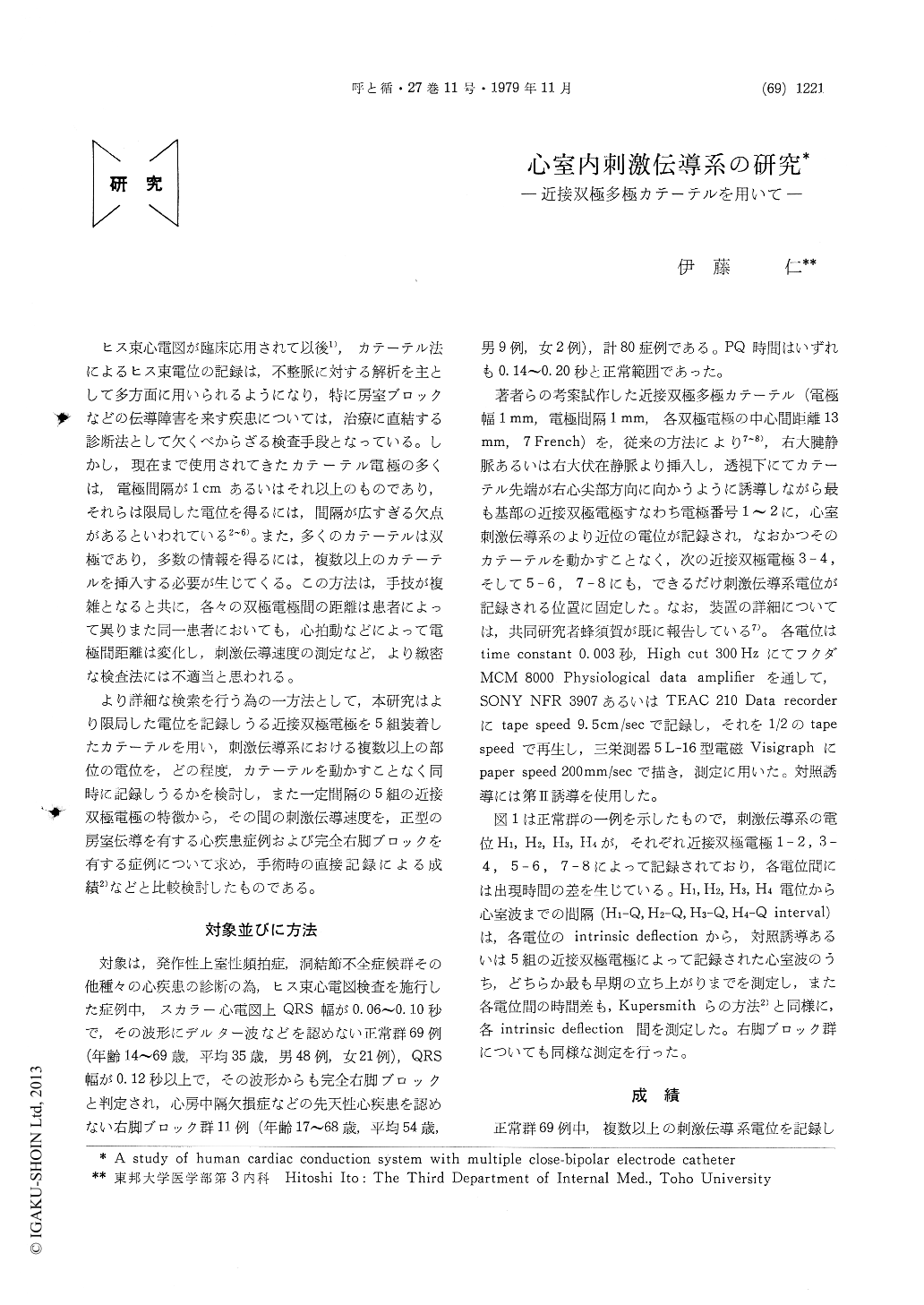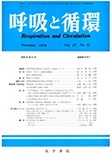Japanese
English
- 有料閲覧
- Abstract 文献概要
- 1ページ目 Look Inside
ヒス束心電図が臨床応用されて以後1),カテーテル法によるヒス束電位の記録は,不整脈に対する解析を主として多方面に用いられるようになり,特に房室ブロックなどの伝導障害を来す疾患については,治療に直結する診断法として欠くべからざる検査手段となっている。しかし,現在まで使用されてきたカテーテル電極の多くは,電極間隔が1cmあるいはそれ以上のものであり,それらは限局した電位を得るには,間隔が広すぎる欠点があるといわれている2〜6)。また,多くのカテーテルは双極であり,多数の情報を得るには,複数以上のカテーテルを挿入する必要が生じてくる。この方法は,手技が複雑となると共に,各々の双極電極間の距離は患者によって異りまた同一患者においても,心拍動などによって電極間距離は変化し,刺激伝導速度の測定など,より緻密な検査法には不適当と思われる。
During the past ten years the catheter technique of His bundle recordings has enhanced our knowledge of cardiac electrophysiology especially to arrhythmias such as A-V block. It was re-ported, however, 10 mm or more wide bipolarelectrode which has been used generally, appeared to be difficult to analyse the more local site. Then the present study was performed to examine the human cardiac conduction system with the multiple close-bipolar electrode catheter since it has been reported that 1 mm or more close bipolar electrode has been able to record the electrical activities at the more local site.
The catheter had five pairs of electrodes with a distance of 1 mm between two electrodes of each pair and had a distance of 13 mm between the midpoints of each pair. It was introduced through the femoral vein and was positioned across the tricuspid valve fluoroscopically. In this study 69 cardiac patients with normal cardiac conduction system (N group) and 11 patients with complete right bundle branch block (RBBB group) were investigated.

Copyright © 1979, Igaku-Shoin Ltd. All rights reserved.


